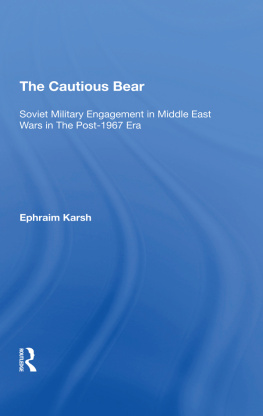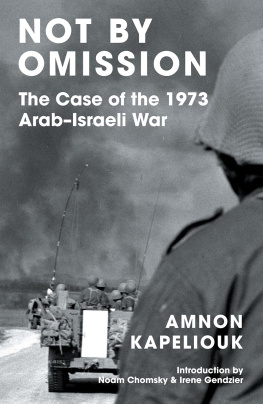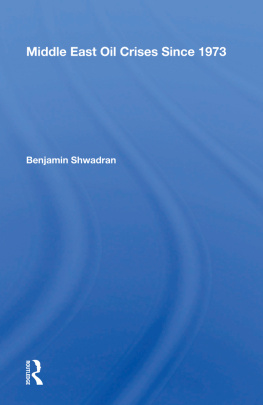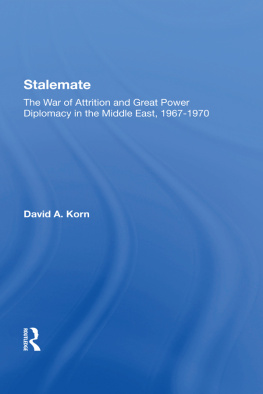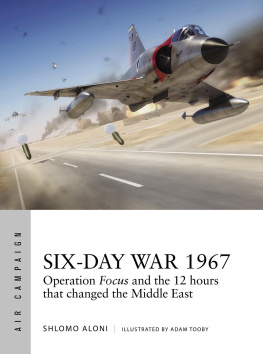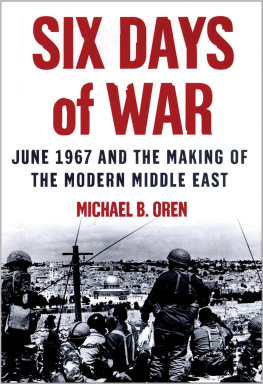
This edition is published by PICKLE PARTNERS PUBLISHINGwww.picklepartnerspublishing.com
To join our mailing list for new titles or for issues with our books picklepublishing@gmail.com
Or on Facebook
Text originally published in 1978 under the same title.
Pickle Partners Publishing 2013, all rights reserved. No part of this publication may be reproduced, stored in a retrieval system or transmitted by any means, electrical, mechanical or otherwise without the written permission of the copyright holder.
Publishers Note
Although in most cases we have retained the Authors original spelling and grammar to authentically reproduce the work of the Author and the original intent of such material, some additional notes and clarifications have been added for the modern readers benefit.
We have also made every effort to include all maps and illustrations of the original edition the limitations of formatting do not allow of including larger maps, we will upload as many of these maps as possible.
The Air Superiority Battle in the Middle East, 1967-1973
Clarence E. Olschner, III, MAJ, USAF
TABLE OF CONTENTS
Contents
TABLE OF CONTENTS
ABSTRACT
THE AIR SUPERIORITY BATTLE IN THE MIDDLE EAST 1967-1973
by Major Clarence E. Olschner, III, USAF.
This paper is an historical study of the strategy, tactics, and weapons employed by Israel, Egypt, and Syria in the battle for air superiority from 1967 through 1973. The study is developed chronologically beginning with the 1967 War, through the War of Attrition, and ending with the cease-fire in the 1973 War. It has been compiled from an extensive review of unclassified, primarily secondary, unofficial sources.
The paper concludes that, in a mid-intensity war with modern air forces and air defense forces:
1. The achievement of strategic, tactical, and/or technological surprise can significantly influence the battle for air superiority.
2. Missiles have demonstrated the capability to significantly influence the air superiority battle in surface-to-air, air-to-air, and air-to-ground operations.
3. Air superiority can be achieved over the modern battlefield only by defeating both surface-to-air and air-to-air capabilities of the enemy.
4. The achievement of air superiority over the battle area requires the combined efforts of air and land forces of which long range artillery may be the most effective weapon for the suppression of surface-based air defenses.
ACKNOWLEDGEMENTS
I would like to say thank you to those who gave generously of their time and talent to make this thesis possible. Dr. Kenneth Werrell provided excellent guidance and assistance throughout the year. COL T. N. Dupuy (USA, Ret.) kindly answered numerous questions and made available several unpublished resources. LTC Roger K. Taylor (USAF) offered insight on the employment of airpower which was most helpful. Mrs. Marilyn Slack has provided expert typing assistance. Finally, I thank my loving wife, Donna, without whose prayers and support this paper could not have been written.
LIST OF TABLES
1. Air Order of Battle, 5 June 1967
2. IAF Losses Against Egypt on 5 June 1967
3. Aircraft Lost 5-6 June 1967
4. Air Order of Battle, 6 October 1973
5. 1973 Aircraft Losses by Type
6. 1973 Aircraft Losses by Cause
7. 1973 Aircraft Losses by Time Period
8. 1973 Combat Sorties and Loss Rates
9. 1973 IAF Air-to-Air Kills by Weapon
INTRODUCTION
Air superiority in the 1973 Arab-Israeli War is of particular interest to the military tactician today because this battle for the air was intensely fought with some of the most modern weapons and tactics in the world. The intensity, complexity and duration of this battle contrasted sharply with the relatively simple and quick manner in which the Israeli Air Force (IAF) gained air superiority in the 1967 War. To understand the conduct of the 1973 War it is essential to examine the development of the air battle in the 1967 War and the War of Attrition.
This paper is an historical study of the strategy, tactics, and weapons employed by Israel, Egypt, and Syria in the battle for air superiority from 1967 through 1973. The study is developed chronologically beginning with the 1967 War, through the War of Attrition, and ending with the cease-fire in the 1973 War. It is appropriate here to say a few words about data.
This study has been prepared from unclassified, primarily unofficial, secondary sources. Because of the limited information available on Syrian participation in the war, greater emphasis has been given to examining the battle on the Egyptian front.
The study of an air superiority battle revolves around the destruction of aircraft and how they were destroyed. While different sources seldom agree on the air order of battle at the start of a war, there is greater difficulty in determining how many aircraft were lost during a war and, further, how they were lost. Few, if any, participants in a war can afford to accurately reveal their own losses, but each side makes claims about the opponents losses. Some claims are conservative, some are optimistic, and some are exaggerated for reasons which are easy to understand.
Since the Arab-Israeli dispute is far from settled, it is not surprising that none of the participants has opened its records for examination.
A number of books and articles have been written by Israeli and, more recently, by Egyptian political and military leaders. These provide good information on the course of the war, but they generally omit details on their own losses. Most of the data on Israeli losses must come from the many military analysts who have contacted unofficial sources in Israel. Unfortunately, very few western writers have had access to unofficial sources in the Arab countries, and their reports usually cover Israeli rather than Arab losses.
This author has attempted to select the data on Israeli losses which is most consistent with the course of the war; the data on Arab losses, as explained, has been limited primarily to that reported by Israel.
With the passage of time and hopefully the resolution of this conflict, one can hope that all participants will reveal more of the information which will enable a true picture of the war to emerge.
CHAPTER I THE 1967 WAR
On 5 June 1967 Israel launched a combined air and land attack against three of her neighbors: Egypt, Jordan, and Syria. Israel initiated the fighting after considerable preparations for war by both sides. On 7 April 1967 there was a serious clash between Syrian and Israeli fighters in which six Syrian MIGs were shot down. {1} Between 14 and 16 May, Egypt, Syria, and Jordan mobilized their armed forces, and the Egyptian Army began a buildup in the Sinai. On 18 May the Israel Defense Forces (IDF) also began to mobilize. The next day Egyptian President Nasser requested that the U.N. observers withdraw from the Sinai, and he ordered the Gulf of Aqaba be closed to Israeli shipping. {2} On 23 May Israeli Premier Eshkol termed the blockade an act of aggression against Israel; a week later he appointed Moshe Dayan as defense minister. The threats, maneuvering, and buildup of forces continued through Sunday, 4 June, when Iraq joined the defense alliance recently formed by Egypt, Syria, and Jordan. On the same day, the Israeli cabinet concluded that Israel could best survive a war against this Arab alliance by striking the first blow. {3}





